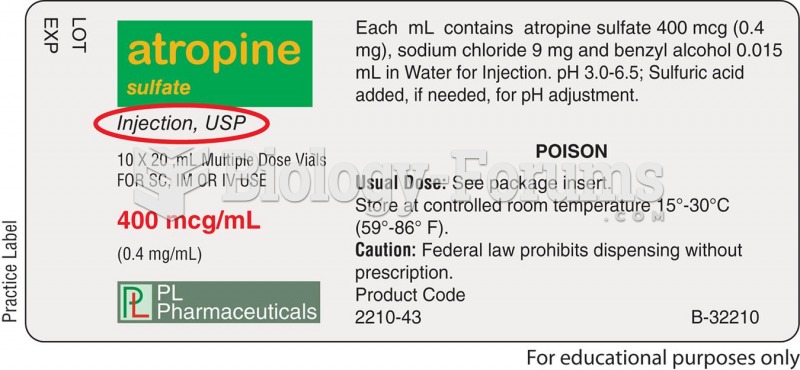Answer to Question 1
3, 4
Rationale 1:You should speak with your physician about receiving a prescription for prophylaxis is incorrect because prophylaxis use of antidysrhythmics can cause dysrhythmias to occur.
Rationale 2:These drugs are only prescribed for prophylaxis if you have a family history of dysrhythmias is incorrect because prophylaxis use of these drugs is based on the patient symptoms and not family history.
Rationale 3: Research studies have found that the use of antidysrhythmic medications for prophylaxis can actually increase patient mortality. This is because there is a narrow margin between a therapeutic effect and a toxic effect with drugs that affect cardiac rhythm. They have the ability not only to correctdysrhythmias but also to worsen or even create new dysrhythmias.
Rationale 4: Research studies have found that the use of antidysrhythmic medications for prophylaxis can actually increase patient mortality. This is because there is a narrow margin between a therapeutic effect and a toxic effect with drugs that affect cardiac rhythm. They have the ability not only to correct dysrhythmias but also to worsen or even create new dysrhythmias.
Rationale 5:These drugs cannot be prescribed for prophylaxis since you have a history of diabetes is incorrect because prophylaxis use of the drugs is not used in the treatment of diabetes.
Global Rationale: Research studies have found that the use of antidysrhythmic medications for prophylaxis can actually increase patient mortality. This is because there is a narrow margin between a therapeutic effect and a toxic effect with drugs that affect cardiac rhythm. They have the ability not only to correctdysrhythmias but also to worsen or even create new dysrhythmias.
Answer to Question 2
1
Rationale 1: Amiodarone (Cordarone) is a potassium channel blocker.
Rationale 2:Acebutolol (Sectral)is incorrect because it is a beta-adrenergic blocker.
Rationale 3:Lidocaine (Xylocaine) is incorrect because it is a sodium channel blocker.
Rationale 4:Mexiletine (Mexitil) is incorrect because it is a sodium channel blocker.
Global Rationale: Amiodarone (Cordarone) is a potassium channel blocker. Lidocaine (Xylocaine)and mexiletine (Mexitil)are sodium channel blockers.Acebutolol (Sectral) is a beta-adrenergic blocker.







